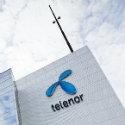Automation champ Telenor slashes spending on COVID-19 impact
It's bad news for equipment vendors and employees but good for automated networks and their investors.

Conspiracy theorists think people catch the novel coronavirus from highly contagious basestations. If so, the network equipment seems to be entirely asymptomatic. Outages and congestion have been rare during the pandemic. Networks can even operate without human aid. Just ask Norwegian automation enthusiast Telenor, which today shaved hundreds of millions off its capital expenditure budget this year, confident about the resilience of its infrastructure.
Deserted network operations centers, basestations that manage themselves, sales that are activated with the touch of a smartphone screen – more than most Tier 1 operators, Telenor has been anticipating this reality for several years. With COVID-19, it may now have arrived. "Network and IT modernization has enabled us to have a better platform and competencies and an ability to deal with a situation like this," said Jørgen Rostrup, Telenor's chief financial officer, during a call with analysts today.
Spending cuts, executives have made clear, are designed to protect cashflow amid a COVID-19 squeeze. In the first quarter, revenues grew 1.5% on a like-for-like basis, with Telenor reporting about 31 billion Norwegian kroner (US$3 billion) in total sales. At NOK14.1 billion ($1.4 billion), earnings before interest, tax, depreciation and amortization also rose organically, by 2.6%. But the impact of the virus in the second half of March wiped about NOK150 million ($14.4 million) off the figure, said Rostrup. Store closures in Asia and a fall in roaming revenues were largely to blame.
Andrew Lee, an analyst at Goldman Sachs, worries this could imply a monthly "run rate" impact of about NOK300 million ($28.8 million) in the second quarter. On that, Rostrup was not prepared to comment. "It is a moving target and the COVID situation globally is volatile and hard to read," he said. But the planned spending cuts are clearly intended to safeguard profitability.
Telenor had previously intended to inject about 15% of its revenues into capital expenditure this year, equaling investment levels in 2019. This capital intensity forecast has now been cut to 13%. Even if annual sales hold up, this would mean spending just NOK14.8 billion ($1.4 billion), instead of the NOK17.4 billion ($1.7 billion) under the original plan. But Telenor is also guiding for lower growth in revenues from subscriptions and traffic, which account for around three quarters of total sales. Its previous forecast was for an increase of 0-2%.
Figure 1: Big dipper: Traffic growth on Telenor's network  Source: Telenor
Source: Telenor
For analysts tracking Telenor, the chief concern is that a capex reduction hits operations and affects the operator's competitiveness. Asked where cuts would happen, Sigve Brekke, Telenor's CEO, suggested 5G investments would be delayed. "There may be some timing issues," he said. Undoubtedly, that is bad news for equipment vendors such as Ericsson, which recently landed a contract to build Telenor's 5G network in Norway.
But the overarching company message is that earlier investment activity, including efforts to automate and digitize operations, means a 2% capex cut will not be disruptive. Network operations centers and IT can already be maintained remotely, said Brekke, using what he called "robotic systems" to run the infrastructure. The shift has led to a major reduction in manpower, with headcount falling from 38,000 employees in 2015 to just 20,000 last year. Although asset sales explain thousands of those earlier job losses, Telenor last month revealed plans to cut another 3,000 jobs by 2022 as it continues to automate. "This situation can be an opportunity to speed up structural programs," said Brekke today.
Want to know more about 5G? Check out our dedicated 5G content channel here on Light Reading.
In further bad news for equipment vendors, Telenor also claims to have improved its "capex efficiency" by switching to a global procurement center and taking advantage of machine learning, a subset of artificial intelligence, to analyze traffic patterns. One clever system allows Telenor to share traffic between basestations so that particular sites do not become overloaded, said Brekke. "That is enabling us to handle a traffic increase without increasing capacity investment."
Telenor's efficiency program has also delivered an impressive reduction in operating costs, a much larger item than capex. Down 4% year-on-year in the first quarter, the shrinking bill has helped to fatten profits, giving Telenor an earnings margin of 45.6% in the first quarter. Three years ago, the figure was just 37.6%.
Despite the revised guidance, markets are encouraged. Telenor's share price was up nearly 4% during afternoon trading in Oslo and is about the same as it was at the start of the year. Few other companies can boast that kind of performance in the current circumstances. The lessons are clear: Pick a service or product the virus has made critical, invest in a fleet of robotic systems and cut down on staff.
Related posts:
— Iain Morris, International Editor, Light Reading
About the Author(s)
You May Also Like



.jpg?width=300&auto=webp&quality=80&disable=upscale)








